July 2018. California and Nevada.
Since getting our first electric car 5 years ago we’ve taken our EV on summer road trips. Last week we took our first road trip in our Model 3. How was it? We saw some great sites, interesting history, and beautiful vistas.
Our EV trips have sort of followed the evolution of EVs in general: First we relied on Level 2 charging, then 50 kW Level 3 charging, and now Tesla’s Supercharger network (Click here for a brief explanation of Level 1, 2 and 3 charging).
Level 2 Trips:
Five years ago when we bought our 2012 Toyota Rav4 EV we could only charge at Level 1 or 2 charging stations. So we drove to destinations that were within the range of a single charge and were close to Level 2 stations where we could charge up for local driving and the trip home. We camped in places like Bodega Bay, Stillwater Cove, and Point Reyes. The Rav4 EV was great for these trips since the rear storage area has plenty of space for camping gear and plenty of room for a family of 4 up front.
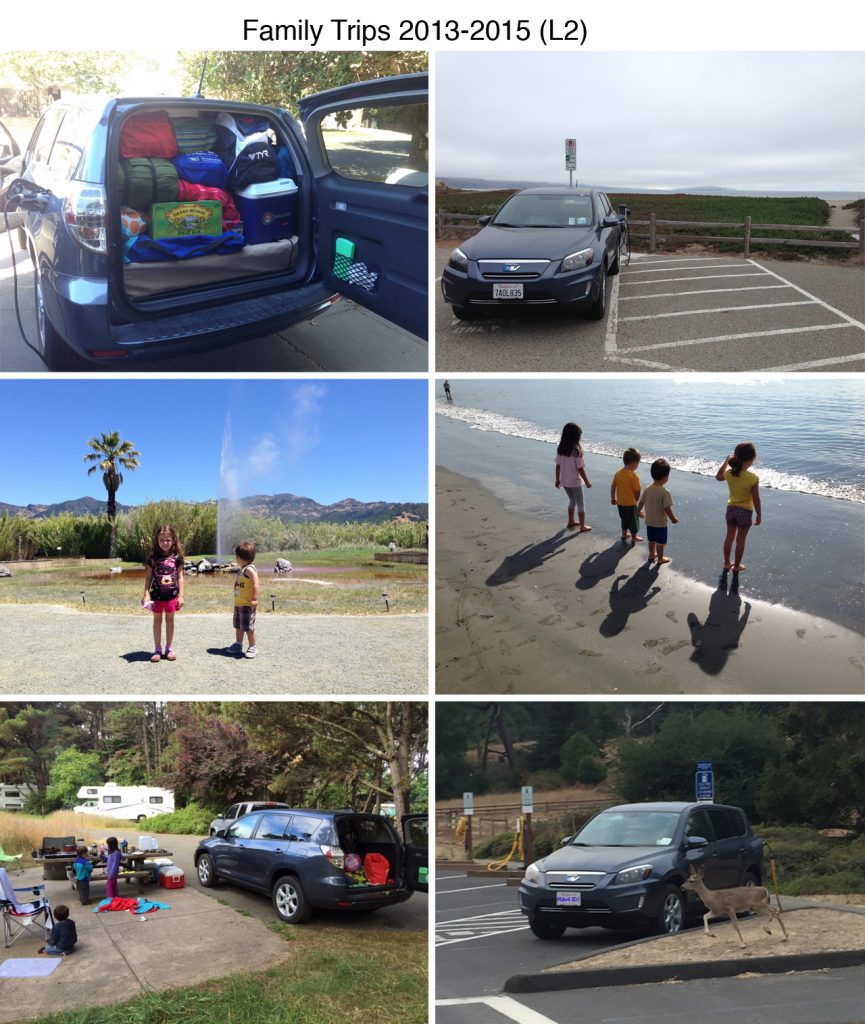
Camping trips to Bodega Bay, Stillwater Cove, and Point Reyes, and a trip to see California’s Old Faithful in the Rav4 EV.
EVolution: DC Charging
To make our EV more useful we added a Level 3 charging port to our Rav thanks to Quick Charge Power’s JdeMO. This allowed us to charge the car in about 40 minutes instead of 4+ hours, and expanded the horizons of our EV. We used the CHAdeMO charging network in our region of California for longer trips to places like Monterey, Calaveras Big Trees State Park, Lake Tahoe, Yosemite, and many many trips to the San Francisco Bay Area.
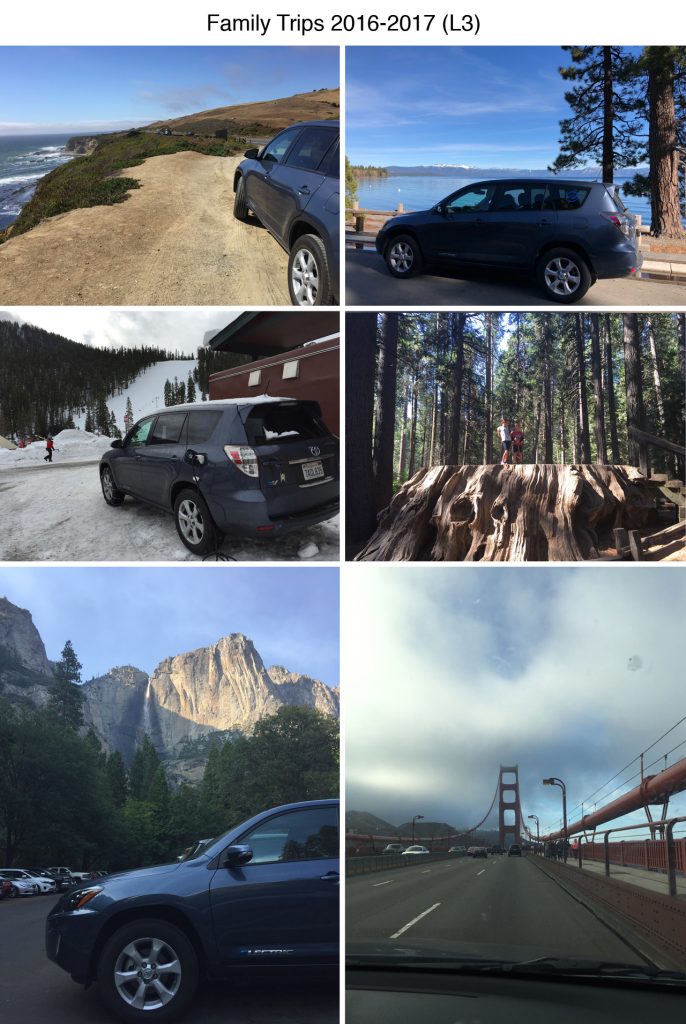
Adding a DC charge port allowed us to venture further on trips to Monterey, the Sierra Nevadas, Calaveras Big Trees, Yosemite, and many trips to the Bay Area.
But EVs continue evolving and getting better. For our latest step, we joined the ranks of families who’ve gone Full EV. In April 2018 we traded in our gas-powered Prius for a Tesla Model 3. Yes, I like the Model 3. A lot. There’s no need for me to go over the car in detail since there are hundreds of reviews out there, but I will share this one trip with you to demonstrate 1) how well EVs with decent range and a nationwide rapid charging network handle real-world road trips, and 2) that EVs can do much of what you’d want from a car.
Important Note: I am far from the first person to road trip in an EV. Many, many people have been making far longer trips, for many years, up and down the West Coast in all sorts of EVs, and clear across the country in their Teslas thanks to the Supercharger network. One recent example that comes to mind is the Model 3 owner who drove over 18,000 miles to catch a ballgame in all 30 MLB ballparks in one month (details here).
Road Trips Supercharged: the Model 3
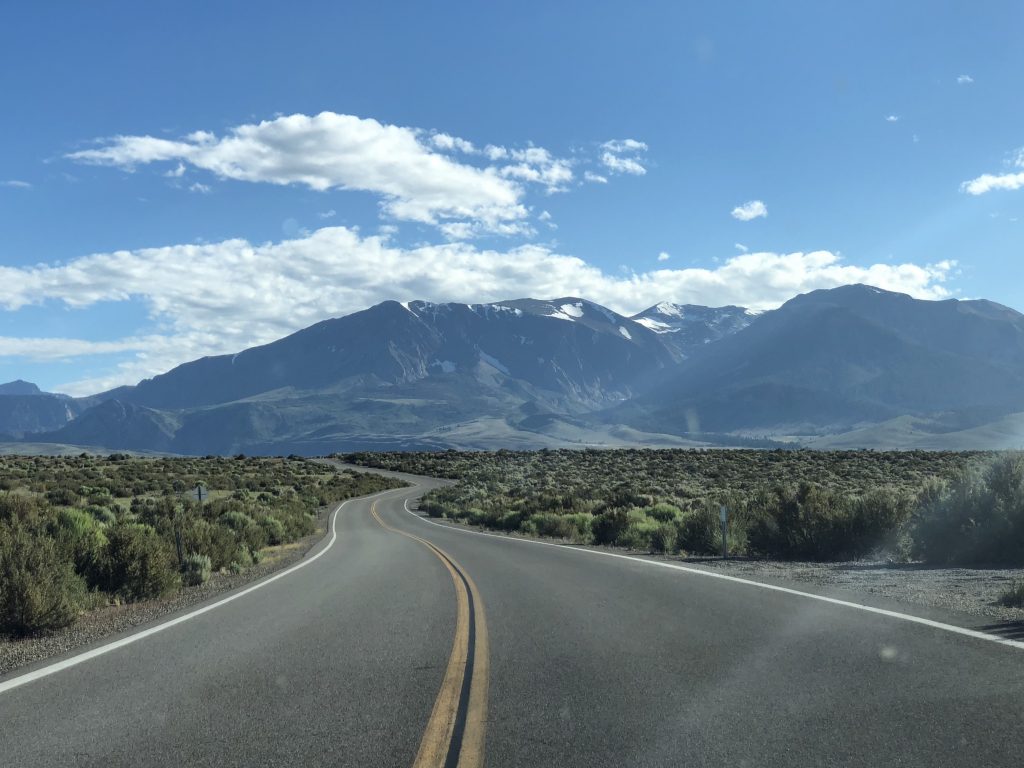
Driving along the Eastern Sierras in July 2018.
This road trip was not planned but came about because my kids did not have summer camp options for the week of July 4th. The first 2 days of that week they came to my office…. and that convinced me to give up the charade that I was actually getting useful work done and that we’d be better off spending real quality time together by going somewhere fun.
We decided to head out past Lake Tahoe into Nevada and then either continue east for what I’ve heard is a beautiful drive, or head south along the Eastern Sierras. I checked out Tesla’s Supercharger network and either direction was fine, but in the end we went south along interstate 395. And what a beautiful drive.
Our trip took us from just about sea level in the Sacramento area to over 8,500′ elevation. Driving any car over mountain passes requires extra energy. In our case about an extra 15 kWh. If your car’s battery pack held 24 kWh of energy, the elevation climb would leave very little for actually moving forward. But with auto manufacturers like Tesla, who sell EVs with larger capacity battery packs, and who have an established nationwide DC charging network, mountain passes are not an obstacle.
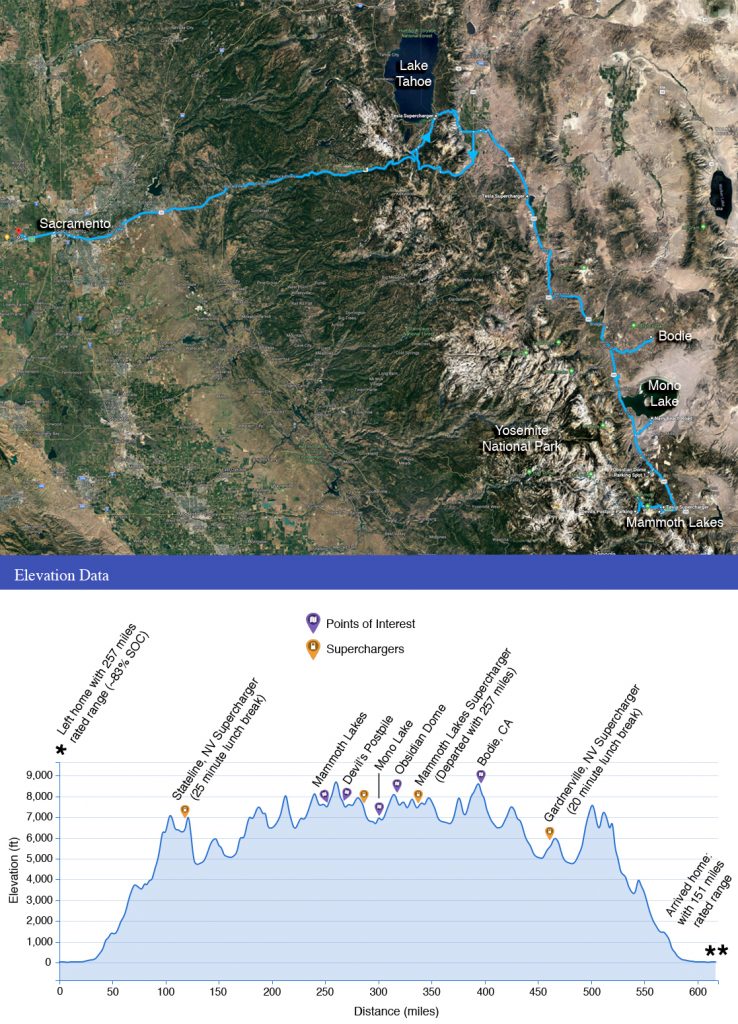
Our route from the Central Valley to Mammoth Lakes with changes in elevation plotted.
One of the great things about EVs is regenerative braking, which recaptures energy when you slow or brake the car. Gas powered cars generate heat while braking on a long descent, but EVs generate electricity that is stored back in the battery pack. Therefore on a round trip that involves steep climbs you’ll recapture a lot of the energy spent gaining altitude when you descend and return to your starting point.
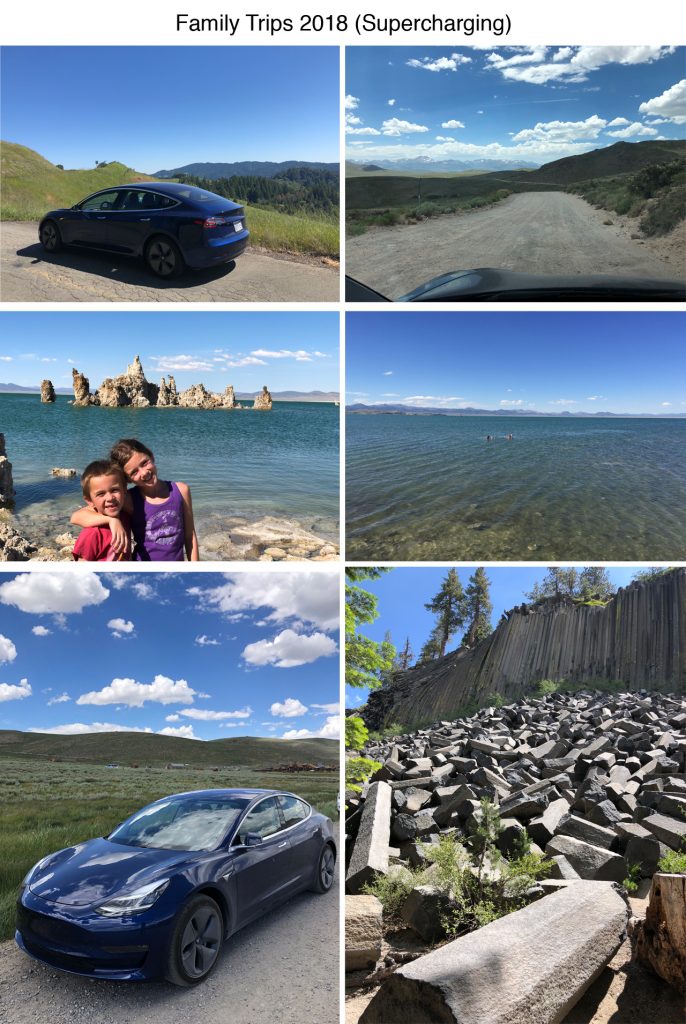
Since getting our Model 3 we’ve driven to coastal Redwood groves and through the Eastern Sierras to swim in Mono Lake, visit Bodie State Park and the Mammoth Lakes area, and see Devil’s Postpile…. all thanks to Tesla’s Supercharger network.
Our driving time was about 6 hours each way. We entertained ourselves with time-tested games like road sign alphabet; let’s irritate our sibling in the next seat; and invented new games like creating a radio channel (the Beatles in our case), and letting the kids give thumbs up or down for each song the car’s streaming audio suite suggested for the channel. This was actually my kids first introduction to the Beatles and I was glad to find they liked it all. But let me tell you, the damned audio system was really determined to get Billy Joel songs into the Beatles lineup.
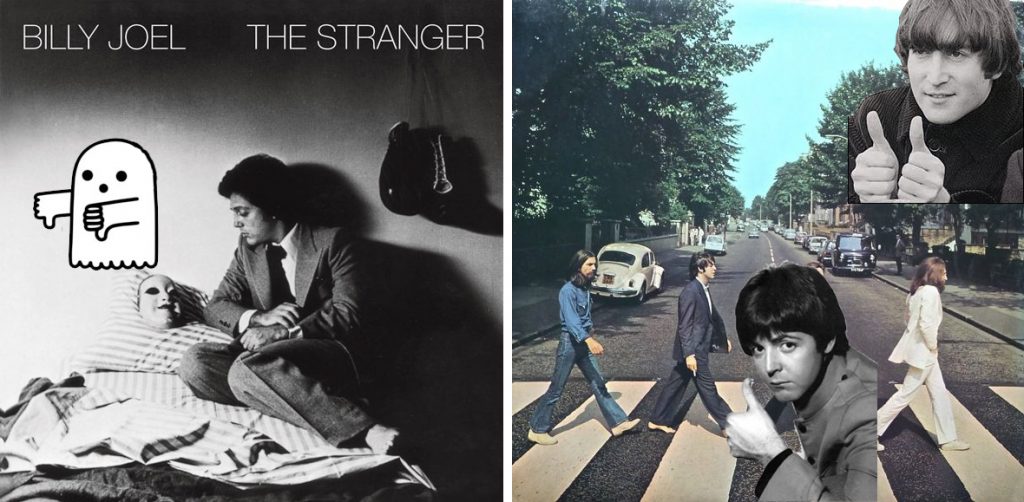
Hey, don’t get me wrong, I like Billy Joel, I’ve seen him in concert, but he ain’t the Beatles.
Besides the music, I enjoyed the scenery. This is a beautiful part of the country and I highly recommend a visit. We swam (actually floated) in Mono Lake, went to Devil’s Postpile, climbed an obsidian dome, and visited a mining ghost town. All on a spur of the moment road trip in our region of the country.
While I like the Model 3’s styling and find it a pure pleasure to drive, the main selling point for me has always been Tesla’s Supercharger network. I can’t emphasize enough how important this sort of network is for the future of EV transportation. Our trip involved more than 12 hours driving in the car, but it was just a short trip when compared to much longer trips many others have taken (current record for coast to coast in a Model 3 is 50 hours 16 minutes). This point is born out by comparing the three Superchargers we used on our trip (see arrows on map below) to the constantly growing number of Tesla Superchargers.
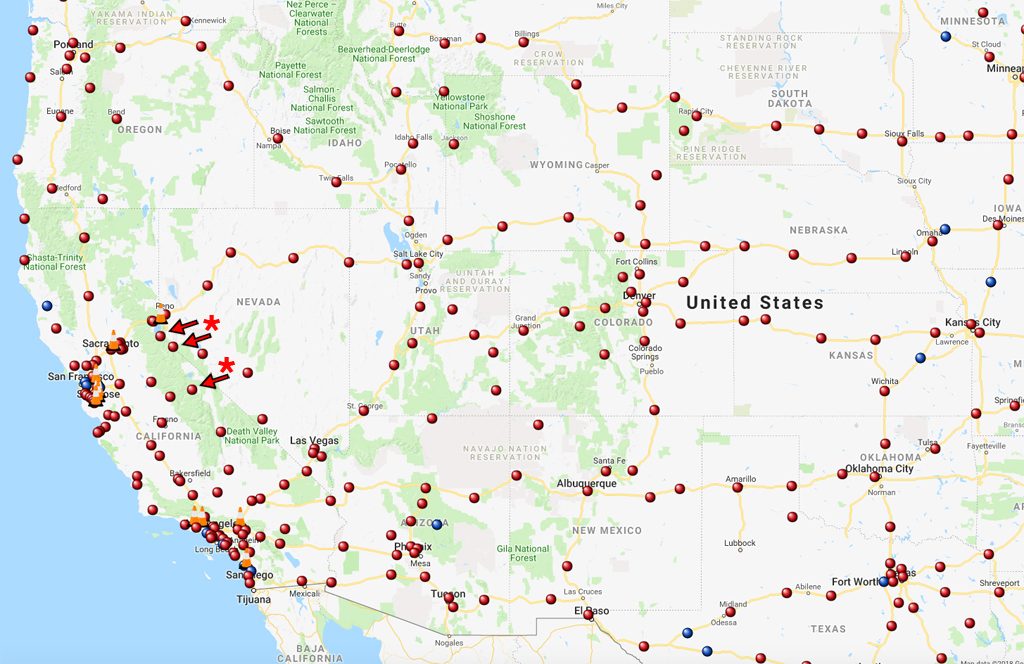
Our short trip seen in the larger context of Tesla’s growing Supercharger network.
Charging Details
I did not fully charge my car in prep for this trip. I charged to slightly over 80% SOC, which gave me 257 miles of rated range.
We used 147 miles of rated range on our first leg driving 118 miles from the Sacramento area to the Stateline, NV Supercharger because of the 7,000+ foot climb. We had 110 miles of range in the pack when we arrived at the Supercharger. It took just 25 minutes for the Supercharger to add 147 miles to the pack while we grabbed a quick bite to eat. We left Stateline, NV with 257 miles of range.
We arrived in Mammoth lakes with over 110 miles of range. The trip to Mammoth was 257 miles with one 25 minute Supercharging/lunch stop. We used 66 kWh for that trip, suggesting that I could get to Mammoth Lakes on a single charge in warm weather. But Tesla’s Supercharger network gives you the flexibility to explore and change plans without worrying about range.
The next day we drove to Devil’s Postpile then picked up some groceries in Mammoth Lakes while Supercharging for 15 minutes. We visited Mono Lake to walk among the Tufa and go for a swim, or rather a float, and checked out a nearby obsidian dome.
On our last day I charged to 257 miles of range in the morning while getting a cup of coffee, and after a short hike we started our return trip. We stopped at Bodie on the way home, a place I’d been wanting to visit for nearly 15 years. This state park is really worth the visit. Who would have guessed we’d finally visit the park after getting rid of our gas-powered cars and going fully electric?
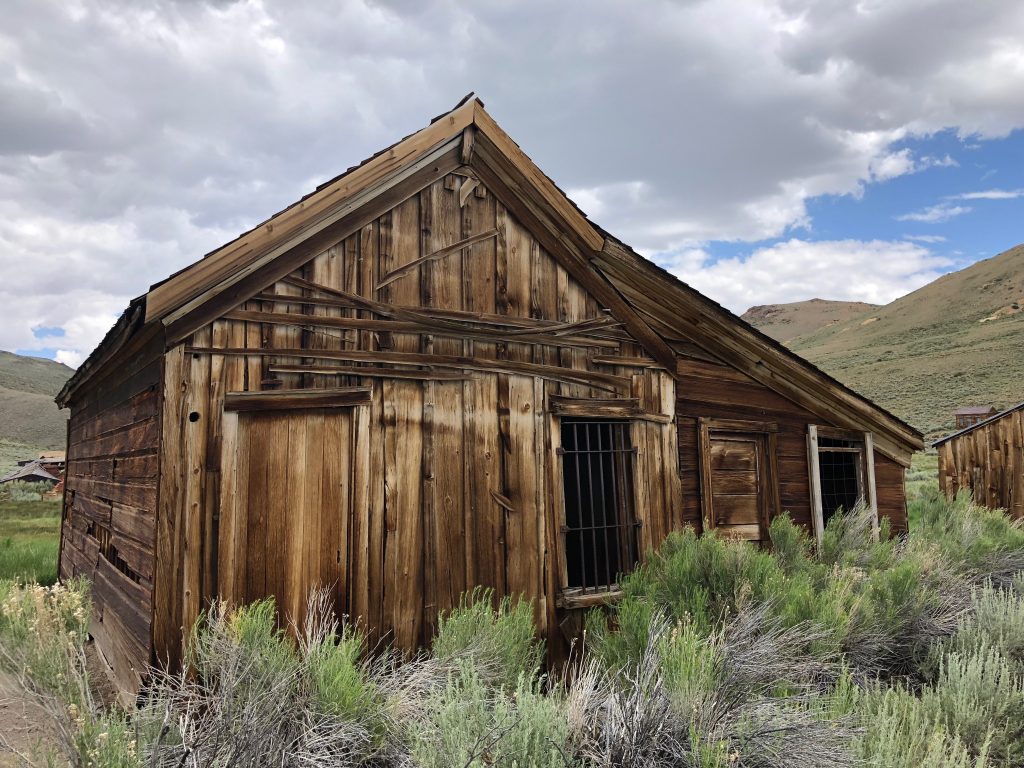
Bodie State Historic Park. This old mining ghost town is a beautiful place to visit if you can get there.
After visiting Bodie we stopped for 25 minutes at the Gardnerville, NV Supercharger to eat lunch and charge. From Gardnerville we basically came back down into the Sacramento Valley and recouped a lot of the energy we’d spent driving up into the mountains. We started our last leg with 257 miles of rated range, but because of the 7,000+ foot descent we used 106 miles of range to drive 157 miles. We arrived home with 151 miles in the pack. That’s gravity, and regeneration, at work.
In the end we used 130 kWh for this 625 mile trip. I had the cruise control set between 61 -75 depending on the road and traffic, and set the AC at a comfortable 72 degrees. The Model 3 has lots of power and acceleration always at the ready, even on very steep climbs. At the same time it can be very efficient. This car has the range and speed for you to drive as you like.
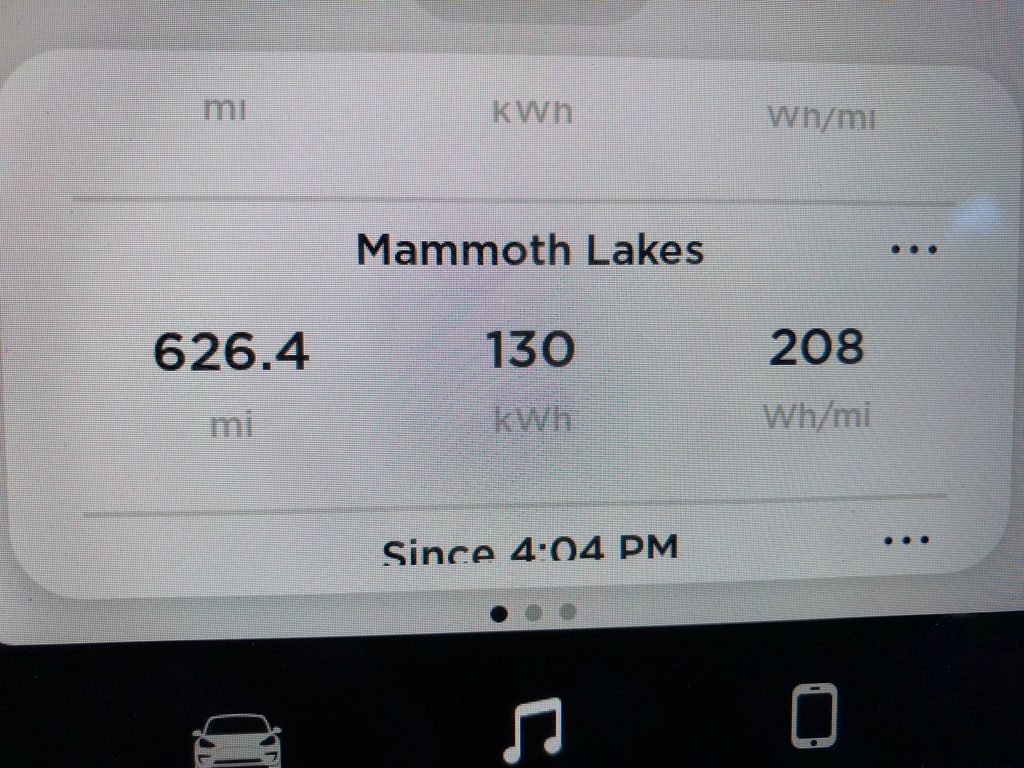
We used 130 kWh for this 625 mile trip. The Model 3 can be fast when you want and efficient if you like that too.
The Model 3 does not have the storage capacity of our Rav4 EV, but the range and Supercharging network more than make up for that. The Model 3 has the trunk space of a typical mid-sized 4-door sedan, and when it comes to packing for trips necessity is the mother of invention so we stored all we needed in the trunk and frunk.
What’s next? I’ve been planning a cross country trip for a long, long time. The Model 3 will take me there in comfort. The question is, will I survive that trip with my kids in the back….

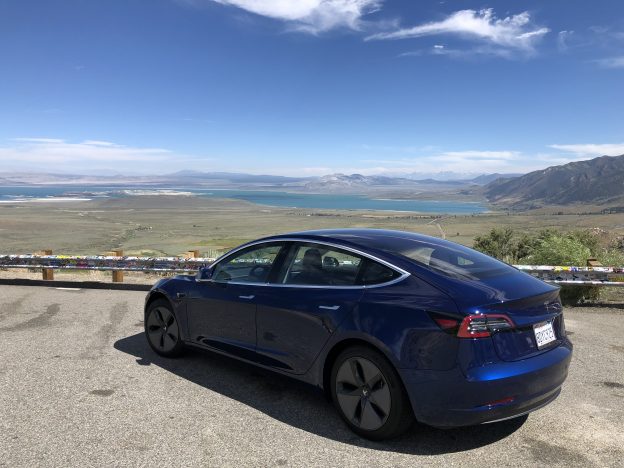
Pingback: Tesla Model 3 Road Trip to San Diego - Tesla Motors Club